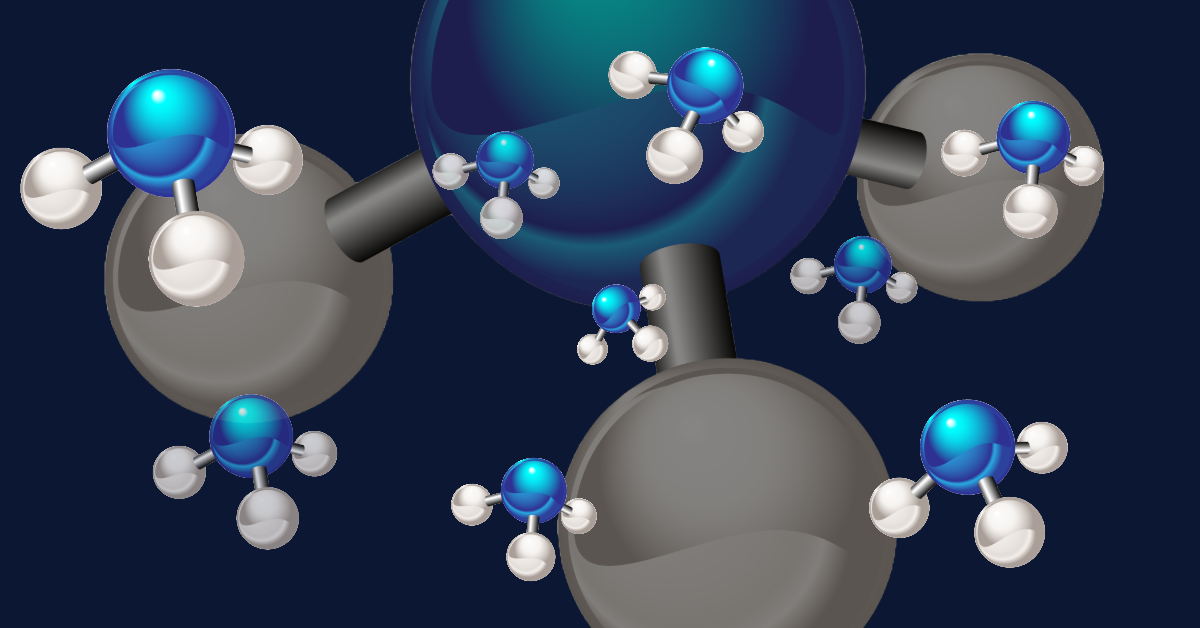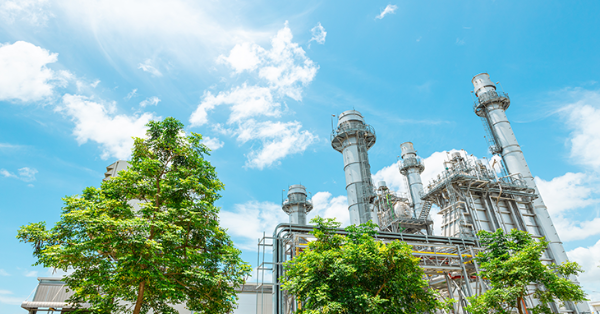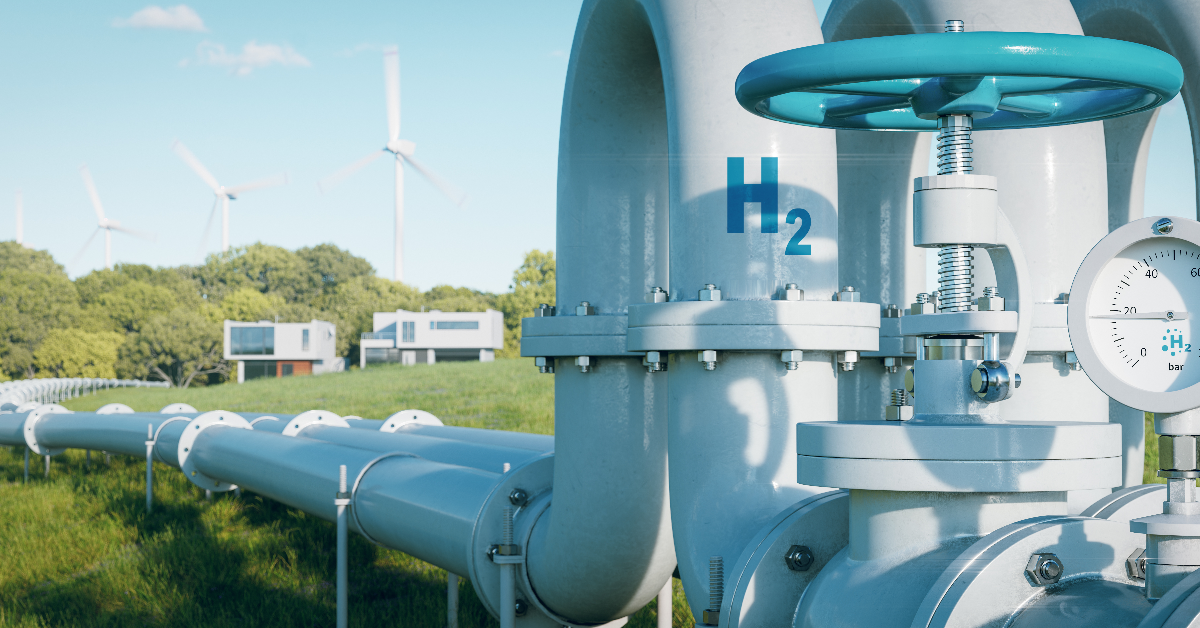Unlocking the Potential of Low Carbon Gases
The world is facing an urgent and inevitable challenge: combating climate change. In the pursuit of sustainable energy solutions, the integration of...

Ammonia (NH3), recognized for its pungent nature, is indispensable for the production of agricultural fertilizers and industrial applications. Yet, the conventional methods of ammonia production contribute significantly to carbon emissions.
Whereas, green ammonia production entails a method wherein ammonia is crafted entirely through renewable means, eliminating its carbon footprint. The approach involves utilizing hydrogen sourced from water electrolysis, paired with nitrogen extracted from the atmosphere. These components are then channeled into the renowned Haber process, also known as Haber-Bosch, powered entirely by sustainable electricity. This process involves the high-temperature and high-pressure reaction of hydrogen and nitrogen, culminating in the formation of ammonia, represented chemically as NH3.
Traditional ammonia production presently falls short of being environmentally sustainable. The predominant approach involves the utilization of methane, water, and air, incorporating steam methane reforming (SMR) to yield hydrogen, which then enters the Haber process. It's important to note that a staggering 90% of the carbon dioxide emissions generated stem from the SMR phase. Currently, ammonia production is an emission-intensive process, contributing 450 Mt C02 annually – a footprint comparable to the total system emissions of South Africa, according to the International Energy Agency (IEA).
As the world seeks innovative ways to combat climate change, the paradigm shift towards green ammonia production. By addressing the carbon emissions associated with traditional ammonia synthesis, green ammonia not only provides a sustainable alternative but also paves the way for greener practices in diverse sectors. The convergence of renewable energy, technology, and forward-thinking individuals promises a more environmentally conscious future in ammonia production.
Want to learn more about the role hydrogen and ammonia might play in the future?
Envision being tasked with the responsibility of orchestrating the design for a green ammonia production facility. This facility is earmarked to deliver an annual yield of 1.5 million tons of NH3 over the span of the next decade. This undertaking is accompanied by a series of complex challenges that demand adept solutions, ranging from evaluating the repercussions of renewable energy fluctuations to devising a resilient system that can withstand diverse scenarios. Ultimately, the objective stands crystal clear: to conceptualize a facility that achieves the most optimal levelized cost of ammonia (LCOA) while ensuring the most cost-efficient operation.
At this point, the exact design of the system in its final form is uncertain. You've gathered important financial details (such as CAPEX, OPEX, economic life, and discount rate) and technical information (including renewable energy profiles and efficiencies) for a range of potential investments, such as storage facilities and renewable energy sources.
Now, take a moment to consider the key questions you aim to address by harnessing this wealth of collected data to its fullest extent. Transitioning into the various simulation phases that PLEXOS offers is crucial. Determining when and how much to invest serves as a direct indicator of capacity expansion planning, intricately integrated into the Long-Term (LT) Plan. Likewise, crafting storage plans mirrors a textbook exercise in the Mid-Term (MT) Schedule. Finally, optimizing hourly dispatch operations is the domain of the Short-Term (ST) Schedule. PLEXOS, serving as a unified engine, empowers you to execute all these simulations within a singular model, whether sequentially or in isolation, streamlining your decision-making process.
Even in these early stages, PLEXOS allows you to visualize the basic structure of the system-to-be and input the essential data needed to conduct the necessary optimization, as shown in Figure 1. Moreover, you have the ability to set up different scenarios to explore, which might involve considering different cost predictions or operational limitations for the system.

Figure 1: PLEXOS visualizes different system components such as generators, storages, and nodes.
After configuring the model and running a simulation, you can finally have a first look at the optimal system design. For the scenario shown in Figure 2, a planning horizon of ten years was selected. The ammonia demand is dispatched daily at a given hour and no further operational constraints were allocated.
Upon initial observation, it becomes evident that PLEXOS incorporates both battery and hydrogen storage solutions into an optimized system. The batteries are tasked with charging and discharging in response to the fluctuations inherent in wind and solar energy sources. In contrast, the hydrogen salt caverns serve as a form of seasonal storage, capable of storing energy for extended durations. Additionally, a portion of the storage capacity is allocated to storing ammonia. This allocation is entirely logical, considering the continuous hourly production of ammonia through the Haber Bosch plant, which is then dispatched on a daily basis for further utilization.

Figure 2: Optimal design results for green ammonia facility
Analyzing the results, Figure 3 shows that during instances of diminished H2 production due to limited access to renewable sources, the system draws upon the hydrogen reserves stored within the Hydrogen Salt Cavern Storage. This strategy effectively prevents any shortfall in NH3 production. On the other hand, when renewable energy availability is ample, the system takes the opportunity to inject excess hydrogen into the Hydrogen Salt Cavern Storage for its safekeeping.

Figure 3: Hydrogen bypass operation for Haber-Bosch process
Figure 4 provides an additional insight, showcasing that during periods when the electrolyzer operates at maximum capacity, any surplus renewable energy generation can be efficiently stored in the battery. This harmonizing mechanism gains remarkable strength when coupled with the hydrogen seasonal storage, leading to a cross-sectoral dispatch strategy.

Figure 4: Hourly operation of electrolyzer and utility scale battery
At this stage, armed with a well-defined understanding of how your ideal green ammonia system might take shape within a specific scenario, it becomes critical to ensure its resilience and adaptability in the face of varying conditions. Just as we initially recognized the critical importance of green ammonia in fostering sustainable energy ecosystems, we now acknowledge the indispensable role of PLEXOS in realizing this vision. PLEXOS offers a robust toolkit to navigate the complexities of system optimization, from the implementation of Monte Carlo methodologies to the incorporation of stochastic optimization techniques. Moreover, as we delve deeper into refining our infrastructure strategy, PLEXOS enables us to introduce more intricate elements into the system, such as optimizing maintenance schedules or addressing the water consumption associated with the electrolyzer process. By leveraging PLEXOS, we not only optimize the efficiency and cost-effectiveness of our green ammonia system but also ensure its resilience in a dynamically evolving energy landscape.

The world is facing an urgent and inevitable challenge: combating climate change. In the pursuit of sustainable energy solutions, the integration of...

Organization: Baringa, exploring the key role of hydrogen in the energy transition with PLEXOS Baringa is a management consultancy that covers...

In our recent blog, The Hydrogen Story – How we Got Here,we examined the technologies, events, and phenomena that have caused us to arrive at the...